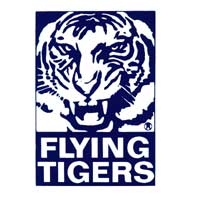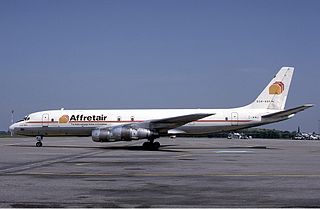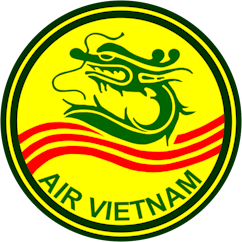
Endeavor Air is a United States regional airline headquartered at the Minneapolis–Saint Paul International Airport in Minneapolis, Minnesota, United States. The airline is a wholly owned subsidiary of Delta Air Lines and staffs, operates and maintains aircraft used on Delta Connection flights that are scheduled, marketed and sold by Delta Air Lines.

The Bristol Type 175 Britannia is a retired British medium-to-long-range airliner built by the Bristol Aeroplane Company in 1952 to fly across the Commonwealth. During development two prototypes were lost and the turboprop engines proved susceptible to inlet icing, which delayed entry into service while solutions were sought.

The Antonov An-26 is a twin-engined turboprop civilian and military transport aircraft, designed and produced in the Soviet Union from 1969 to 1986.

Flying Tiger Line, also known as Flying Tigers, was the first scheduled cargo airline in the United States and a major military charter operator during the Cold War era for both cargo and personnel. The airline was bought by Federal Express in 1988.

Loftleiðir HF, internationally known as Icelandic Airlines or Loftleiðir Icelandic, was a private Icelandic airline headquartered on the grounds of Reykjavík Airport in Reykjavík, which operated mostly trans-atlantic flights linking Europe and America, pioneering the low-cost flight business strategy on these routes.

Affretair was a cargo airline based in Zimbabwe.

Trans Mediterranean Airways SAL, styled as TMA Cargo, was a cargo airline based in Beirut, Lebanon. The airline restarted operations in 2010, following a six-year hiatus. It suspended operations once again in September 2014.

Active from 1951 to 1975, Air Viet Nam was South Vietnam's first commercial air carrier, headquartered in District 1, Saigon. Established under a decree by Chief of State Bảo Đại, the airline flew over two million passengers, throughout the Vietnam War, and until its collapse due to the Fall of Saigon.

The Canadair CL-44 was a Canadian turboprop airliner and cargo aircraft based on the Bristol Britannia that was developed and produced by Canadair in the late 1950s and early 1960s. Although innovative, only a small number of the aircraft were produced for the Royal Canadian Air Force (RCAF), and for commercial operators worldwide.

As of July 2020, a total of 61 Boeing 747 aircraft, or just under 4% of the total number of 747s built, first flown commercially in 1970, have been involved in accidents and incidents resulting in a hull loss, meaning that the aircraft was either destroyed or damaged beyond economical repair. Of the 61 Boeing 747 aircraft losses, 32 resulted in no loss of life; in one, a hostage was murdered; and in one, a terrorist died. Some of the aircraft that were declared damaged beyond economical repair were older 747s that sustained relatively minor damage. Had these planes been newer, repairing them might have been economically viable, although with the 747's increasing obsolescence, this is becoming less common. Some 747s have been involved in accidents resulting in the highest death toll of any civil aviation accident, the highest death toll of any single airplane accident, and the highest death toll of a midair collision. As with most airliner accidents, the root of cause(s) in these incidents involved a confluence of multiple factors that rarely could be ascribed to flaws with the 747's design or its flying characteristics.
Slick Airways was a cargo airline from the United States, that operated scheduled and chartered flights between 1946 and 1966. The airline was founded by Earl Slick, a Texas aviator and multimillionaire who along with his brother had inherited $25 million after their father's death in 1930.
Transmeridian Air Cargo was a British cargo airline that operated from 1962 until 1979 when it merged with IAS Cargo Airlines to form British Cargo Airlines.

Líneas Aéreas Suramericanas S.A.S is a cargo airline based in Bogotá, Colombia. It operates scheduled and chartered cargo flights to Latinoamerica and the Caribbean. Its main base is El Dorado International Airport, Bogotá.











